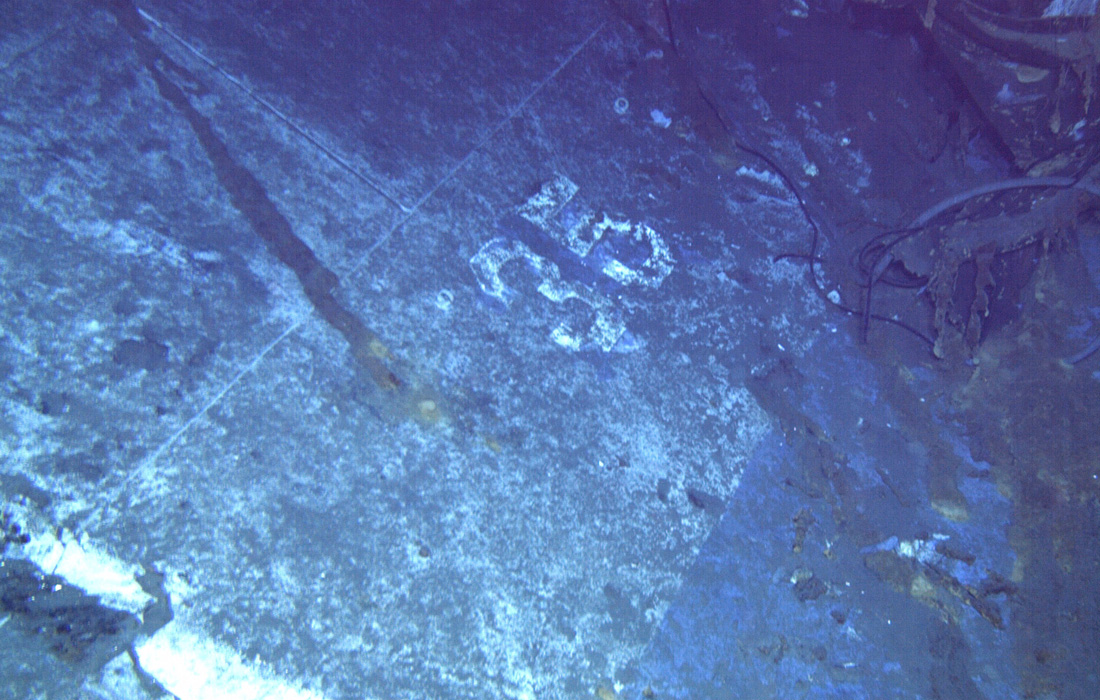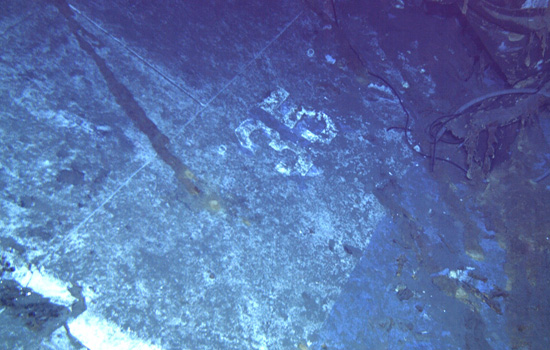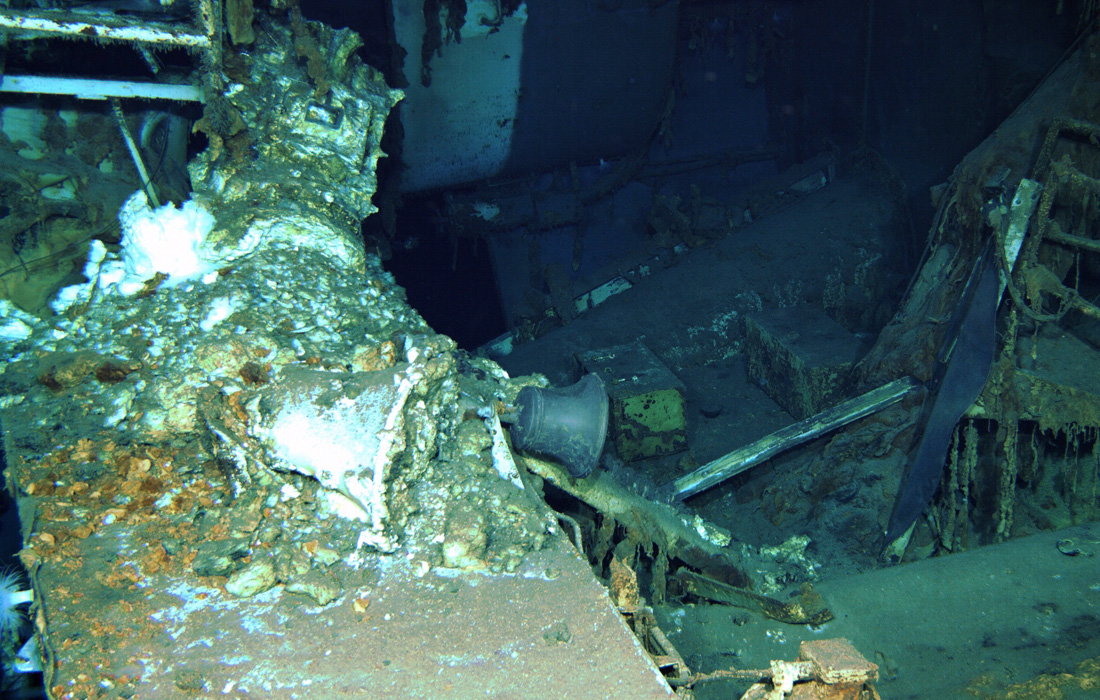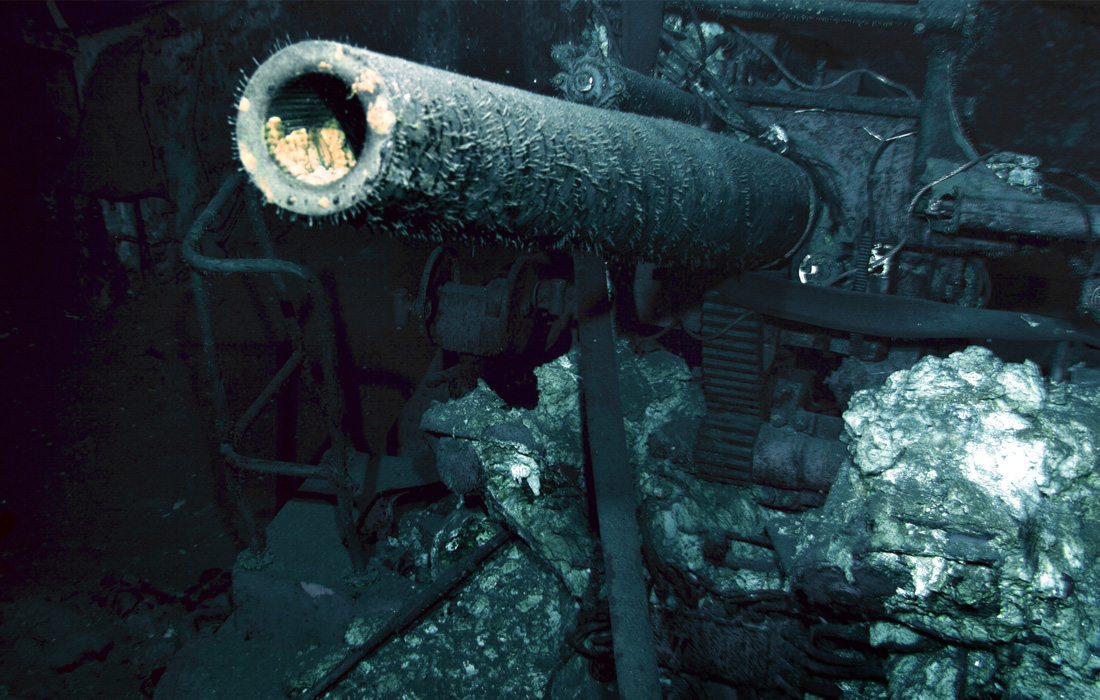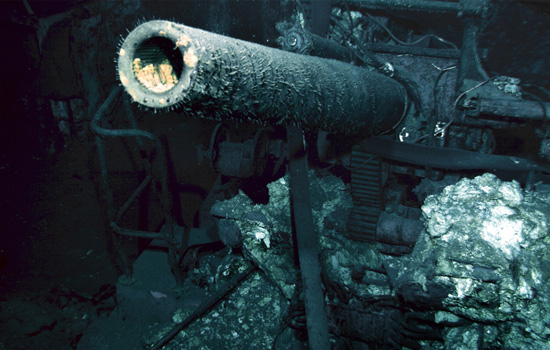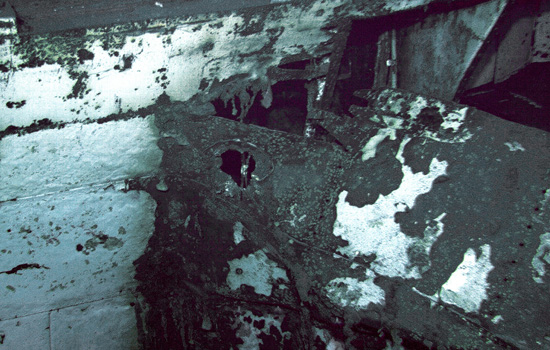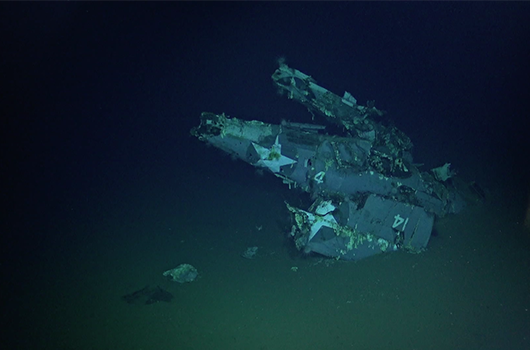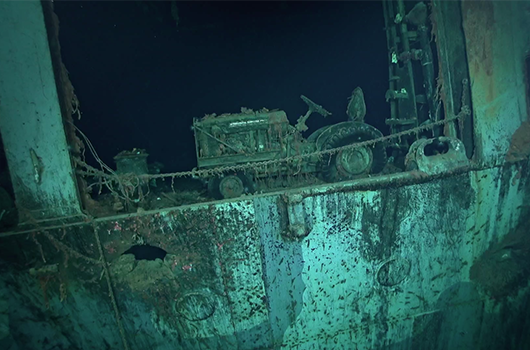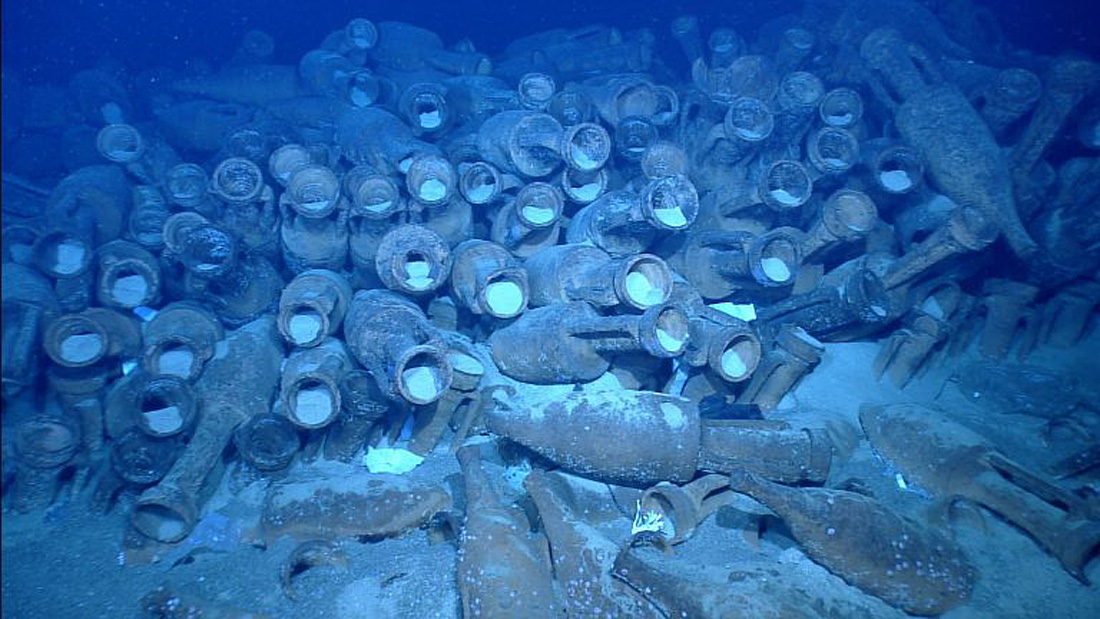Ocean Discoveries
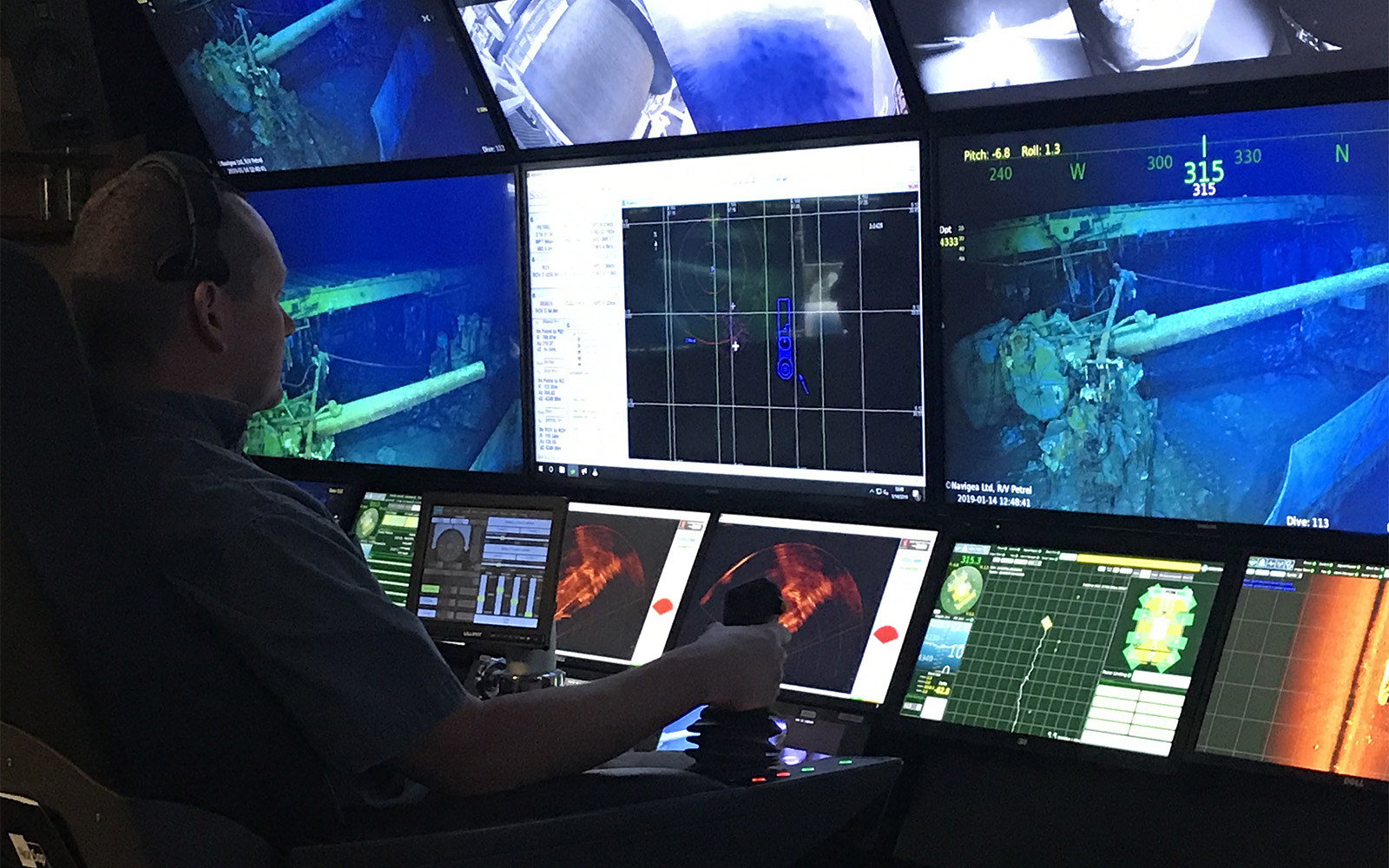
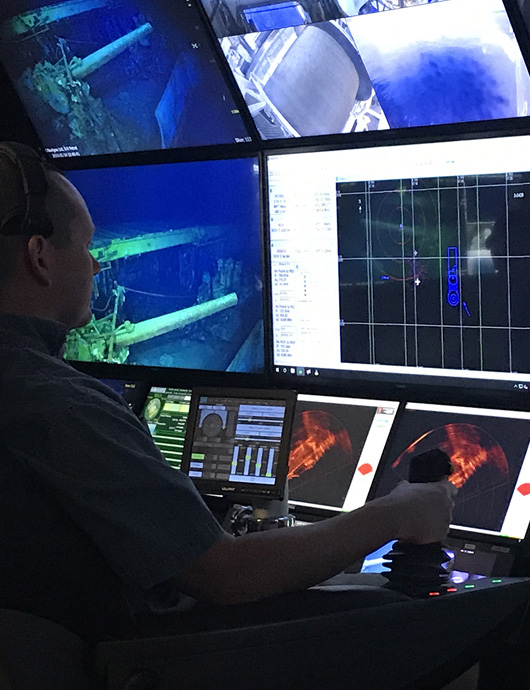
Paul’s underwater explorations were driven by his desire to find answers to the “how?” and “why?” associated with each discovery. His efforts, and the answers he helped unearth, resulted in important information that not only advances our collective historic and scientific record, it preserves artifacts for future generations and provides closure for families of those whose loved ones lost their lives.
For a period of time, he outfitted his personal yacht, M/Y Octopus, to serve this purpose because he recognized the untapped potential for discovery as technology was evolving to allow deeper exploration. He later purchased and outfitted R/V Petrel (which was sold by his estate in 2022), an underwater research and exploration vessel, to reach ocean depths that were otherwise inaccessible in order to locate historically significant shipwrecks and explore underwater ecosystems. “Like many others, I have a personal connection to this history,” Paul said. “My family was fortunate that my father returned from his WW2 service in the European theater. For thousands of other families this unfortunately was not the case. In documenting the final resting place of so many service members, all of us involved want to keep alive the memory of their dedication, heroism, and self-sacrifice.” With this mission driving them, Paul’s team was able to locate or explore and document some of the most historically significant shipwrecks in modern history.
After initial discoveries on the MV Octopus, Paul outfitted the RV Petrel as a research vessel dedicated to exploring the ocean depths.
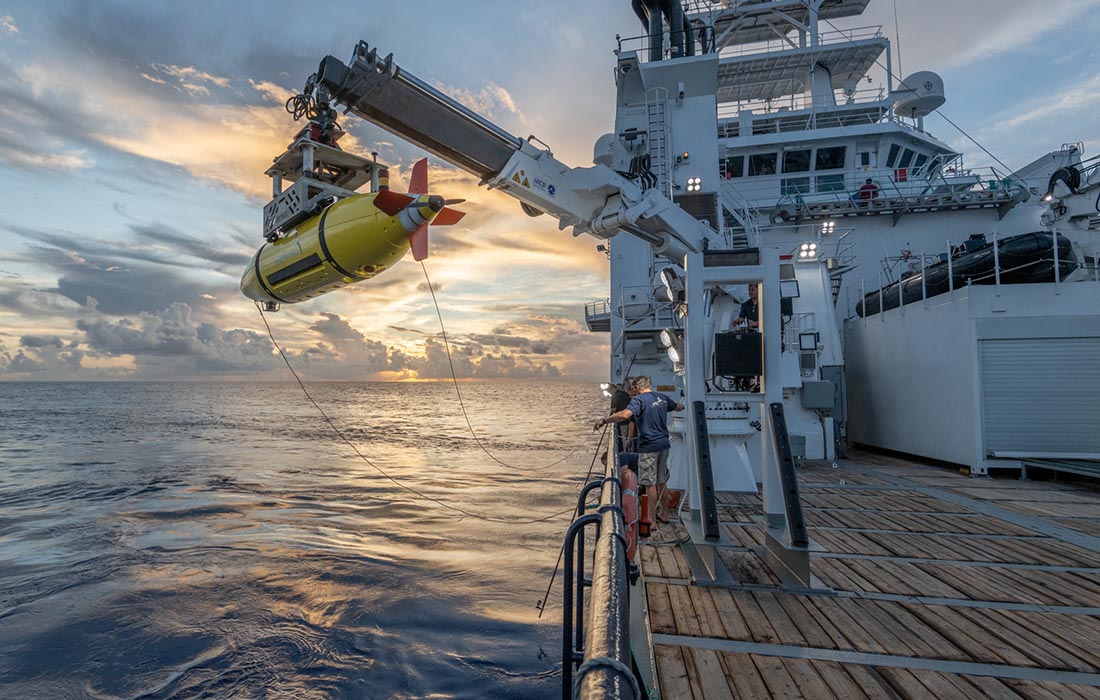
After initial discoveries on the MV Octopus, Paul outfitted the RV Petrel as a research vessel dedicated to exploring the ocean depths.
One of his most significant discoveries the crew made while operating onboard Octopus was the Musashi. The Japanese Imperial Navy’s IJN Musashi was one of the largest and most technologically advanced battleships in naval history. The battleship was sunk on October 24, 1944, in the Sibuyan Sea, but for seven decades the wreck’s exact resting place was unknown. Paul and his team spent eight years using historical records from four different countries, together with detailed topographical data, to identify possible sites. They also conducted seabed scanning with a remotely operated vehicle (ROV) to search for the Musashi. In 2015, after multiple operations, the vessel was finally located 3,000 feet beneath the surface. Video of the discovery was streamed from the bottom of the sea to more than a million people around the world. You can watch it here.
An instruction manual for the Musashi.
The remains of the teak Chrysanthemum on the bow of Musashi.
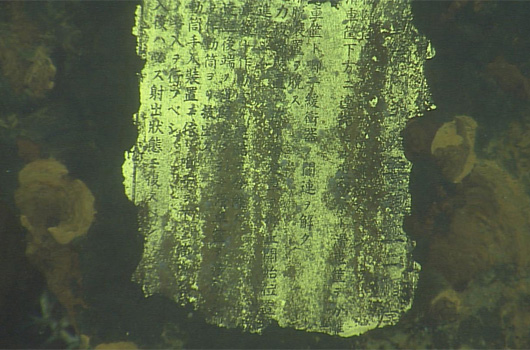
An instruction manual for the Musashi.
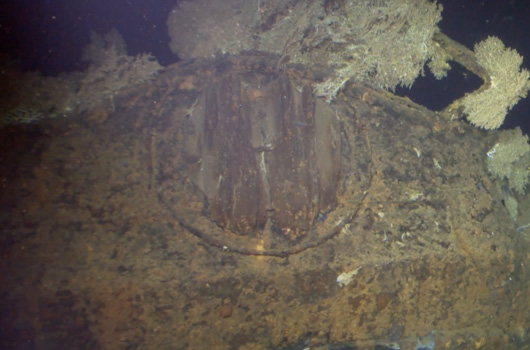
The remains of the teak Chrysanthemum on the bow of Musashi.
“For the 1,415 officers and men who lost their lives in HMS Hood on 24 May 1941, the recovery of her bell and its subsequent place of honour in The National Museum of the Royal Navy in Portsmouth will mean that future generations will be able to gaze upon her bell and remember with gratitude and thanks the heroism, courage and personal sacrifice of Hood’s ship’s company who died in the service of their country.”
— Rear Admiral Philip Wilcocks
In 2015, alongside (and with the approval of) members of the UK Royal Navy, Paul’s team deployed the ROV on a mission to raise the bell of the HMS Hood so it could be restored and displayed in the Navy’s National Museum as a permanent memorial. Known as “The Mighty Hood,” HMS Hood was the pride of the Royal Navy — a symbol of the Britain’s naval supremacy throughout the world. When the battlecruiser was sunk by the German battleship Bismarck in the North Atlantic in May of 1941, only three of her 1,418-person crew survived. The defeat shook the United Kingdom to its core. Winston Churchill responded with his now-famous “sink the Bismarck” command and launched an all-out search not only to seek revenge, but to restore the nation's wartime morale.
The first attempt to locate HMS Hood had to be aborted when the North Atlantic’s notoriously unpredictable weather, coupled with heavy underwater currents, made the ROV too hard to control. A second, successful attempt was made in 2015 using a newer, state-of-the-art ROV. Then, after nine months of painstaking restoration of the bell of HMS Hood, Princess Anne struck eight bells in a ceremony at The National Museum of the Royal Navy in Portsmouth Historic Dockyard as the descendants of the sailors proudly looked on.
The first attempt to locate HMS Hood had to be aborted when the North Atlantic’s notoriously unpredictable weather, coupled with heavy underwater currents, made the ROV too hard to control. A second, successful attempt was made in 2015 using a newer, state-of-the-art ROV. Then, after nine months of painstaking restoration of the bell of HMS Hood, Princess Anne struck eight bells in a ceremony at The National Museum of the Royal Navy in Portsmouth Historic Dockyard as the descendants of the sailors proudly looked on.
When the newly purchased R/V Petrel came out of retrofit and equipment testing, the crew set its sights on the elusive USS Indianapolis, which had been the goal of many publicly promoted searches. The Indianapolis was lost in the final days of World War II, just after completing its secret mission delivering components for Little Boy, one of the two nuclear weapons that would be dropped on Japan. The ship was torpedoed by a Japanese submarine in the early morning hours of July 30, 1945 and sank quickly (just 12 minutes), which made it impossible to deploy many of the ship’s lifesaving equipment. Of the 1,196 sailors and Marines on board, 890 initially survived the sinking, but most died of exposure, dehydration, saltwater poisoning and shark attacks. In the end, only 316 sailors remained alive. The momentous discovery of the USS Indianapolis closed an important chapter in American history and brought closure to the families of those lost. The ship remains property of the US Navy and its location is confidential and restricted. Throughout the search, Paul collaborated with Navy authorities and survivors’ groups to honor the 19 still-living crew members as well as the families of all who served on the highly decorated heavy cruiser.

